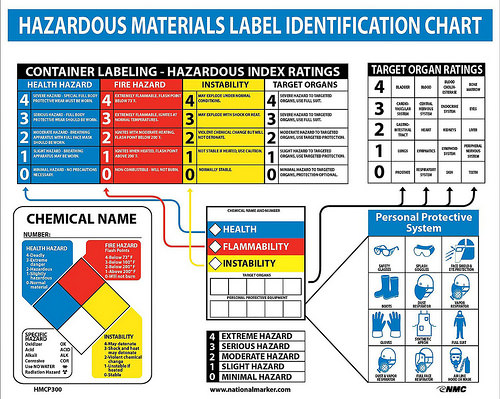On July 25, the Environmental Protection Agency (EPA) issued a formal finding under the Clean Air Act (CAA), that greenhouse gas (GHG) emissions from aircraft “endanger public health or welfare.” This aircraft-specific finding builds on EPA’s 2009 finding that GHGs endanger public health, covering the same six GHGs: carbon dioxide (CO2), methane, nitrous oxide, hydrofluorocarbons, perfluorocarbons, and sulfur hexafluoride. EPA calculates that aircraft produce 12 percent of all U.S. transportation GHG emissions and more than 3 percent of total U.S. GHG emissions, and that U.S. aircraft GHG emissions represent 29 percent of all global aircraft GHG emissions and 0.5 percent of total global GHG emissions.
Read MoreAudit, Compliance and Risk Blog
EPA Takes Another Step Towards Regulating GHG Emissions From Aircraft
Posted by Jon Elliott on Tue, Sep 06, 2016
Tags: Environmental risks, Environmental, EPA, Greenhouse Gas, ghg
EPA Establishes Formaldehyde Limits For Composite Wood Products
Posted by Jon Elliott on Tue, Aug 30, 2016
EPA has just issued final rules to limit exposure to formaldehyde emissions from plywood and other laminated and composite wood products. The Formaldehyde Emission Standards for Composite Wood Products Act of 2010 (“the Act”, which is codified as Title VI of the Toxic Substances Control Act (“TSCA”)) required EPA to develop these rules. The Act responded to evidence of dangerous emissions from substandard construction products, publicized particularly by health hazards in temporary trailers provided by the Federal Emergency Management Agency (FEMA) to victims of Hurricane Katrina and other natural disasters. The Act established standards based on California rules, and directed EPA to issue nationwide rules by January 1, 2013 to enforce these standards. EPA missed its deadline, but has just announced rules that will become effective after publication in the Federal Register (probably in August 2016).
Read MoreTags: Health & Safety, Environmental risks, Environmental, EHS, EPA, Hazcom
The New TSCA 3 – Adjusting Preemption of State and Local Chemical Regulation
Posted by Jon Elliott on Tue, Aug 23, 2016
This post continues my discussion of the “Frank R. Lautenberg Chemical Safety for the 21st Century Act,” which was adopted in June to revise the 1976 Toxic Substances Control Act (TSCA). In prior posts I summarized changes made to accelerate testing of chemical substances that are already in use in the U.S., and to enhance premanufacture evaluation of new chemicals and significant new uses of existing chemicals. The set of major changes created by the 2016 Amendments addresses TSCA’s preemptive impact – the degree to which EPA actions or inactions under TSCA can restrict states' authority to enact their own regulatory and informational programs. This note addresses preemption.
Read MoreTags: Environmental risks, Environmental, EPA, Hazcom
This post continues my discussion of the “Frank R. Lautenberg Chemical Safety for the 21st Century Act,” which was adopted in June to revise the 1976 Toxic Substances Control Act (TSCA). In the last post I summarized changes made to accelerate testing of chemical substances that are already in use in the U.S., and for which evidence developed since their introduction suggests they may pose an “unreasonable risk” to health or the environment. This “grandfathering” of never-evaluated and potentially hazardous chemicals has been seen as a major weakness. The 2016 Amendments also strengthen the process of evaluation for new chemicals offered for distribution in the U.S. This note addresses changes to these new chemical reviews.
Read MoreTags: Environmental risks, Environmental, EHS, EPA, Hazcom
On June 22, President Obama signed the “Frank R. Lautenberg Chemical Safety for the 21st Century Act,” which revises the 1976 Toxic Substances Control Act (TSCA) extensively. TSCA was enacted 40 years ago to empower the Environmental Protection Agency (EPA) to acquire and evaluate data regarding the effects of chemical substances and mixtures on human health and the environment, and to prevent unduly hazardous chemicals from entering commercial use. Although TSCA was a huge step forward at the time, its limitations became ever clearer in subsequent years, and compounded to leave important gaps in protective regulation of chemicals. (I summarized basic provisions here). The late Senator Lautenberg spent many years trying to thread the political needle between chemical companies and health and environmental advocates. He died without achieving this goal, but is honored by the new legislation – which I refer to from now on as “the 2016 Amendments.” (I summarized an earlier version of this new legislation here)
Read MoreTags: Environmental risks, Environmental, EPA, Hazcom
On May 17, the Environmental Protection Agency (EPA) issued a proposed order registering the pesticide sulfoxaflor, using authority under the Federal Insecticide, Fungicide and Rodenticide Act (FIFRA). This proposal is the latest action in a long-running and controversial review of that potential pesticide, and continues to consider how toxic this active ingredient is to bees, and therefore how and if it can be used. Coming after a recent court decision vacating EPA’s previous attempt to register sulfoxaflor, the answer is not clear (I provided a basic discussion of FIFRA registration here).
Read MoreTags: Environmental risks, Environmental, EHS, EPA, Hazcom
Supreme Court Decides When Corps of Engineers’ Jurisdictional Determinations are “Final” and Appealable
Posted by Jon Elliott on Tue, Jul 05, 2016
Section 404 of the Clean Water Act (CWA) authorizes the U.S. Army Corps of Engineers (Corps) to regulate the “discharge” of “dredged material” or “fill material” into “navigable waters.” Section 404 provision applies if someone wants to dredge a waterway, put fill (or a constructed feature such as a pier or berm) into a waterway, or fill a wetland that occupies a waterway, if that waterway is regulated by CWA as a “water of the United States.” That definition is subject to extreme controversy at the moment – several U.S. Supreme Court decisions struck down a century of agency interpretations, which the Corps and the Environmental Protection Agency (EPA) sought to readjust by changing rules that have now been stayed pending litigation that’s certain to reach the Supreme Court again (I blogged about the rules here).
Read MoreTags: Environmental risks, Environmental, EPA, Hazcom, effluent
Most of the laws and regulations discussed in these blogs exist to ensure proper management of hazardous chemicals and products, in ways designed to minimize environmental and human exposures. Pesticide management provides important variations on these themes, since pesticides are used for the very purpose of killing targeted organisms in the environment … and are regulated to target those uses to protect humans and other non-target species. Within the United States, the Federal Insecticide, Fungicide and Rodenticide Act (FIFRA) provides the national framework for regulation of pesticides, including registration of active ingredients and mixtures, licensing of applicators, and requirements for the application and use of these hazardous materials. FIFRA provides the U.S. Environmental Protection Agency (EPA) with overall responsibility, although different elements of pesticide regulation are subject to different balances of federal (EPA) and state control.
Read MoreTags: Health & Safety, OSHA, EHS, EPA, Hazcom
Can a Hospital Be Both Hygienic and Environmentally Sustainable?
Posted by Jane Dunne on Mon, May 02, 2016
When it comes to hospitals we all expect the highest standard of cleanliness and yet, we want every part of our lives to be more sustainable. Of course, when hospitals are faced with a choice that puts hygiene up against sustainability, hygiene always wins. But I wonder if it’s possible to find ways for both to win?
Read MoreTags: Health & Safety, Environmental risks, Environmental, EHS, EPA, sustainability
The Clean Water Act’s (CWA’s) national water quality purview includes National Pollutant Discharge Elimination system (NPDES) provisions for “stormwater” that may contain pollutants such as oil, industrial contaminants, and sediment. This means run-off of rain or snow melt containing pollutants from manufacturing, processing, or raw material storage areas at an industrial site, that passes through a “conveyance” (such as a storm drain) into waters of the United States. The Environmental Protection Agency (EPA) administers or delegates permit programs covering discharges from the following:
Read MoreTags: Environmental risks, Environmental, EHS, EPA, Hazcom, Stormwater










